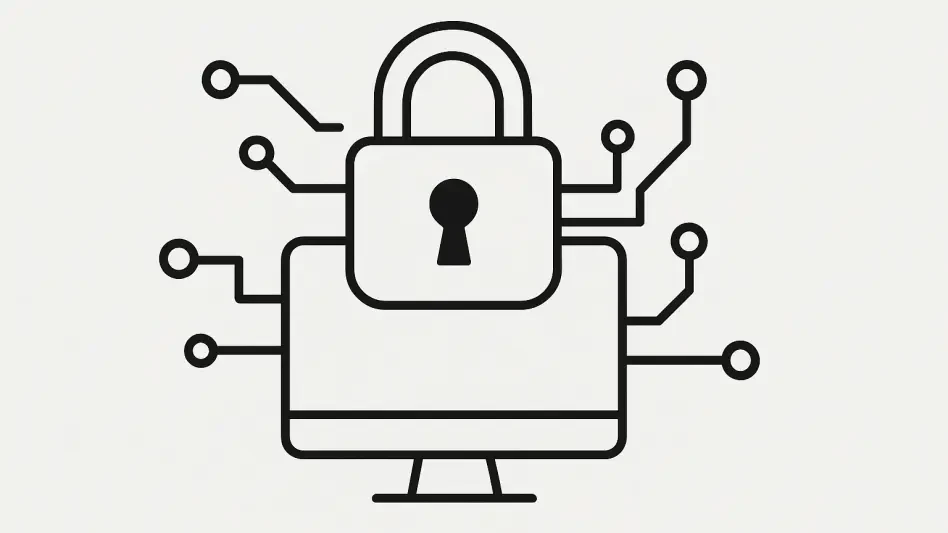In the fast-paced realm of cybersecurity, where digital threats evolve at an alarming rate, selecting the right operating system for penetration testing and ethical hacking can significantly impact a professional’s effectiveness. Imagine a scenario where a critical network vulnerability needs to be identified before malicious actors exploit it—having the most suitable platform could mean the difference between a secure system and a costly breach. Kali Linux and Parrot OS stand as two formidable contenders in this space, both built on the reliable Debian foundation and designed to arm cybersecurity experts with powerful tools for assessing vulnerabilities and fortifying defenses. Each system, however, carves out its own niche, catering to distinct needs within the community, from enterprise-level audits to educational explorations. This comparison aims to unpack their differences, guiding practitioners toward the platform that aligns best with their operational demands, hardware capabilities, and expertise levels. With cyber threats becoming increasingly sophisticated—spanning cloud environments to IoT devices—these tools must adapt swiftly, and both platforms are rising to the challenge in unique ways. Whether the focus is on raw power for professional testing or a lightweight solution for learning and privacy, understanding the strengths of each system is crucial in today’s digital landscape.
Diving Into System Demands and Performance
Resource Requirements for Optimal Operation
When evaluating penetration testing platforms, the hardware requirements often serve as the first gatekeeper, determining which systems are even viable for deployment. Kali Linux, renowned for its comprehensive toolset, sets a higher bar with a minimum of 2 GB of RAM—though 4 GB is recommended for smoother operation—and demands over 20 GB of storage space. This makes it a less feasible option for older hardware or setups with limited resources, such as budget laptops or constrained virtual environments. For professionals working in well-equipped enterprise settings, these specs might not pose an issue, but for others, they can be a significant barrier. The resource intensity reflects the platform’s focus on delivering robust functionality tailored to complex security audits, often prioritizing capability over accessibility on minimal systems.
In stark contrast, Parrot OS emerges as a champion of efficiency, requiring only 320 MB of RAM at a minimum—with 2 GB suggested for optimal performance—and just 15 GB of storage. This lightweight architecture positions it as an ideal choice for users operating on low-spec machines or those deploying in virtual machine setups for testing purposes. The ability to run effectively on modest hardware opens doors for students, hobbyists, and professionals in resource-scarce environments, ensuring that cybersecurity tools remain accessible across a broader spectrum of devices. This disparity in system demands often becomes a deciding factor for users who must balance performance needs with hardware limitations.
Efficiency in Real-World Scenarios
Beyond raw specifications, the actual performance of these platforms under operational conditions reveals critical insights into their practical utility. Kali Linux, with its heavier footprint, can sometimes lag on underpowered systems, particularly during intensive tasks like simultaneous network scanning and exploitation. While it excels in environments where hardware isn’t a constraint, its performance dips noticeably on older machines, potentially slowing down time-sensitive operations. This makes it imperative for users to assess their available resources before committing to this platform, especially in scenarios where speed and responsiveness are non-negotiable during live assessments.
Parrot OS, on the other hand, consistently demonstrates superior efficiency, particularly in virtualized or cloud-based deployments where resource allocation is often limited. Performance benchmarks indicate that it handles tasks with agility even on minimal hardware, maintaining stability during multi-tool operations. This efficiency proves invaluable for users who need to run multiple instances or operate in constrained setups, such as portable labs or temporary testing environments. For those prioritizing seamless operation over expansive feature depth in less robust systems, this platform often emerges as the more practical choice, ensuring that hardware limitations don’t hinder critical security work.
Exploring Toolsets and Specialized Features
Breadth and Depth of Security Utilities
At the core of any penetration testing platform lies its arsenal of tools, and both Kali Linux and Parrot OS deliver impressively with over 600 pre-installed utilities designed for tasks ranging from network analysis to digital forensics. Kali Linux stands as a benchmark in this domain, focusing tightly on security auditing and exploitation with a meticulously curated selection of tools. Recent updates have introduced capabilities like netexec, targeting modern vulnerabilities in cloud and networked environments, ensuring that professionals have access to cutting-edge resources for tackling sophisticated threats. This dedication to maintaining an industry-standard toolkit makes it a preferred option for formal assessments where reliability and compliance are paramount.
While Parrot OS mirrors much of the functionality found in Kali’s toolkit, it distinguishes itself by weaving in additional layers of utility that extend beyond traditional penetration testing. Alongside standard tools for scanning and exploitation, it offers specialized features like the Tor Browser and AnonSurf, which prioritize user anonymity during operations. These additions cater to scenarios where operational security is as critical as the testing itself, providing a safeguard against digital tracking or surveillance. This broader scope allows users to address a wider array of concerns, from vulnerability discovery to maintaining privacy in sensitive contexts, appealing to a diverse set of cybersecurity needs.
Focus Areas and Unique Offerings
Delving deeper into their design philosophies, the distinct focus areas of each platform become evident, shaping their applicability to specific tasks. Kali Linux hones in on delivering a streamlined experience for penetration testers and security auditors, with every tool and update aligned to meet the rigorous demands of professional environments. Its emphasis on exploitation and vulnerability assessment, backed by regular enhancements from Offensive Security, ensures that it remains at the forefront of addressing complex attack vectors. This singular focus often makes it the go-to for enterprise settings where standardized methodologies and proven tools are critical to success.
Parrot OS, conversely, adopts a more versatile stance, balancing security testing with privacy protection and operational flexibility. Beyond its anonymity tools, it includes cryptographic utilities like ZuluCrypt, enabling secure data handling alongside traditional hacking tasks. This multifaceted approach positions it as a compelling choice for users who need a platform that can adapt to varied roles—be it research, education, or operations in environments where staying under the radar is essential. By catering to these niche requirements, it fills gaps that a purely security-focused system might overlook, offering a holistic solution for modern cybersecurity challenges.
Assessing Usability and User Experience
Interface Design and Accessibility
The user experience of a penetration testing platform can significantly influence productivity, especially when navigating complex tasks under tight deadlines. Kali Linux employs the XFCE desktop environment, a lightweight choice that prioritizes performance over aesthetic appeal, aligning with its professional-grade focus. However, this comes at the cost of a steeper learning curve, as its command-line-heavy nature and intricate tool organization can intimidate those new to the field. For seasoned practitioners accustomed to terminal-based workflows, this setup offers efficiency, but for others, it may present an initial hurdle that requires dedication to overcome.
Parrot OS takes a different tack, opting for the MATE desktop environment, which strikes a balance between resource efficiency and intuitive design. This setup provides a more approachable interface, making it easier for users across skill levels to navigate tools and execute tasks without extensive prior knowledge. The emphasis on user-friendliness lowers the barrier to entry, allowing beginners to engage with cybersecurity practices more comfortably while still offering the depth needed for advanced operations. This accessibility often sways those who value a smoother onboarding process over raw, unpolished performance.
Learning Curve and Daily Operation
Beyond the initial interface, the day-to-day usability of these platforms reveals further distinctions in how they cater to different user needs. Kali Linux, with its focus on professional applications, often demands a deeper understanding of Linux systems and security concepts to fully leverage its capabilities. Tasks like configuring tools or troubleshooting issues can be time-consuming for those not already versed in its ecosystem, making it less ideal for quick learning or casual experimentation. Its strength lies in environments where users are prepared to invest time in mastering the system for high-stakes, formal assessments.
In contrast, Parrot OS streamlines many operational aspects, reducing the friction associated with setup and tool management, which proves beneficial for users who need to hit the ground running. Its design minimizes the complexity of daily interactions, allowing focus on the tasks at hand rather than wrestling with the system itself. This ease of use is particularly advantageous in educational settings or for professionals transitioning into cybersecurity, where the goal is to build skills without being bogged down by technical intricacies. The difference in operational experience often guides users toward the platform that matches their patience for system mastery and immediate usability needs.
Evaluating Community and Documentation Support
Availability of Learning Resources
In the intricate world of cybersecurity, access to robust support systems can be a game-changer when tackling unforeseen challenges or deepening one’s expertise. Kali Linux excels in this arena, bolstered by Offensive Security’s commitment to providing an extensive ecosystem of resources. With a massive user base, comprehensive documentation, and a wealth of tutorials and forums, solutions to issues are often just a search away. This vast support network ensures that professionals can resolve problems swiftly, access detailed guides on advanced techniques, and stay updated on best practices, making it a reliable backbone for critical operations.
Parrot OS, while supported by a passionate and active community, operates on a smaller scale, which can sometimes limit the breadth of available resources. Documentation exists but lacks the depth and variety seen in Kali’s offerings, potentially leaving users to rely on community forums for niche or complex queries. Although the community remains responsive, the smaller pool of shared knowledge might slow down troubleshooting for intricate issues. This gap in resource availability often influences decisions for those who prioritize immediate access to extensive learning materials over a more compact, albeit dedicated, support base.
Impact on Problem-Solving and Growth
The strength of community and documentation directly affects how efficiently users can navigate obstacles and expand their skill sets. For Kali Linux users, the abundance of well-structured guides and peer insights translates into faster problem resolution, whether it’s configuring a specific tool or addressing a system glitch during a critical audit. This environment fosters continuous learning, as professionals and students alike can tap into a repository of knowledge that spans from basic setups to sophisticated exploitation strategies. The result is a platform that not only supports current tasks but also propels long-term growth in the field.
With Parrot OS, the more limited support framework can pose challenges, particularly for intricate or less common issues that require detailed guidance. While the community’s enthusiasm helps mitigate this to some extent, users might need to invest additional effort in seeking out answers or experimenting independently. This can slow down progress for those reliant on external assistance, though it may encourage self-reliance among more adventurous learners. The disparity in support ecosystems often tips the balance for users who value a well-trodden path of resources versus those comfortable forging their own solutions in a less crowded space.
Identifying Target Audience and Use Cases
Professional and Enterprise Applications
Understanding the ideal user base for each platform clarifies their practical applications in diverse cybersecurity contexts. Kali Linux stands as the undisputed choice for seasoned professionals, security consultants, and enterprise teams engaged in formal security assessments. Its alignment with industry standards, such as those required for certifications like the Offensive Security Certified Professional (OSCP), makes it indispensable in corporate environments where compliance and reliability are non-negotiable. The platform’s robust toolset and extensive support cater to high-stakes scenarios, ensuring that complex audits and penetration tests are conducted with precision and confidence.
Beyond individual expertise, Kali Linux’s design suits organizations that prioritize standardized workflows and need a platform recognized across the industry. Its adoption in enterprise settings often stems from the assurance of regular updates and a vast community to back mission-critical operations. For teams tasked with securing large networks or meeting stringent regulatory requirements, this platform provides the depth and credibility necessary to address sophisticated threats. This focus on professional-grade applications often positions it as the default for environments where failure isn’t an option.
Educational and Privacy-Focused Scenarios
Shifting the lens to different user needs, Parrot OS carves out a strong niche in educational environments, research activities, and operations where privacy takes center stage. Its lightweight architecture and intuitive interface make it an excellent entry point for students and newcomers to cybersecurity, allowing them to explore penetration testing without the intimidation of a steep learning curve. The reduced resource demands also ensure accessibility on a wider range of hardware, fitting well in classroom settings or personal labs where budgets might constrain equipment options. This makes it a practical tool for building foundational skills.
Additionally, Parrot OS appeals to users in contexts where anonymity and operational security are paramount, thanks to features like integrated Tor support and AnonSurf. Researchers or professionals working in sensitive environments—where digital surveillance is a concern—find these privacy tools invaluable for safeguarding their activities. The platform’s versatility in addressing both learning and discreet operational needs highlights its role as a complementary option, often filling gaps left by more resource-heavy systems. This dual appeal to beginners and privacy-conscious users underscores its unique positioning in the cybersecurity toolkit landscape.
Responding to Cybersecurity Trends
Addressing Modern Threat Landscapes
As cybersecurity threats continue to evolve, encompassing areas like cloud vulnerabilities and IoT risks, penetration testing platforms must adapt to remain relevant. Kali Linux stays ahead of the curve with its latest updates, introducing tools designed to tackle contemporary attack vectors such as credential extraction and large-scale network exploitation. These enhancements reflect a commitment to equipping users with the means to counter sophisticated threats that dominate today’s digital environment. By focusing on emerging challenges, the platform ensures that professionals remain prepared for the tactics employed by modern adversaries.
The continuous evolution of Kali’s toolkit also addresses the growing complexity of enterprise systems, where hybrid and cloud-based architectures introduce new points of failure. Updates prioritize compatibility and functionality in these dynamic settings, ensuring that security assessments remain thorough regardless of the infrastructure. This proactive approach to tool development helps maintain its status as a cornerstone for professionals tasked with defending against the latest cyber risks, reinforcing its relevance in an ever-shifting threat landscape.
Privacy and Virtualization in Focus
Parrot OS responds to the changing cybersecurity arena with a distinct emphasis on privacy and resource efficiency, aligning with heightened concerns over digital surveillance. Its built-in anonymity features, such as secure communication tools and traffic anonymization, cater to users who must operate discreetly in environments where tracking poses a significant risk. This focus on safeguarding user identity and data addresses a critical need in today’s world, where personal and operational security often intersect with traditional penetration testing goals.
Moreover, Parrot OS’s lightweight design offers a natural advantage in virtualization and cloud-based operations, areas increasingly central to cybersecurity workflows. Its minimal resource consumption ensures smooth performance in virtual machines or remote setups, supporting the trend toward distributed and scalable testing environments. By enhancing these capabilities, the platform positions itself as a forward-thinking solution for users navigating the intersection of privacy concerns and modern deployment models, ensuring adaptability to future technological shifts.
Reflecting on Strategic Tool Selection
Looking back, the comparison between Kali Linux and Parrot OS revealed a nuanced landscape where neither platform claimed absolute superiority, but rather excelled in distinct domains based on user needs and operational contexts. Kali Linux solidified its reputation as the industry benchmark for professional penetration testing, delivering unmatched depth in tools and support that proved essential for enterprise audits and certification pursuits. Parrot OS, meanwhile, carved a vital space with its resource efficiency and privacy features, serving as a gateway for learners and a shield for those in sensitive operations. Moving forward, the decision hinges on aligning specific goals—whether it’s formal security assessments or exploratory learning—with the strengths of each system. A strategic approach might involve leveraging both platforms in tandem, deploying Kali for high-stakes tasks and Parrot for lightweight or discreet missions. As threats continue to evolve, staying informed about updates to these tools will be key to maintaining a robust defense. Ultimately, the choice reflects a balance of hardware realities, skill readiness, and mission priorities, guiding cybersecurity practitioners toward tailored solutions in an increasingly complex digital frontier.








